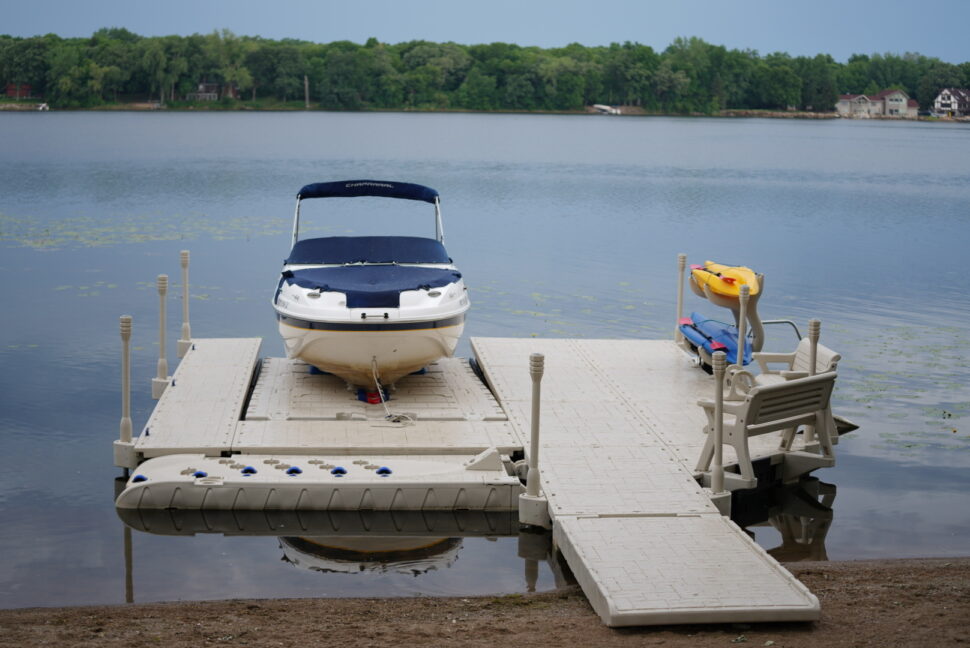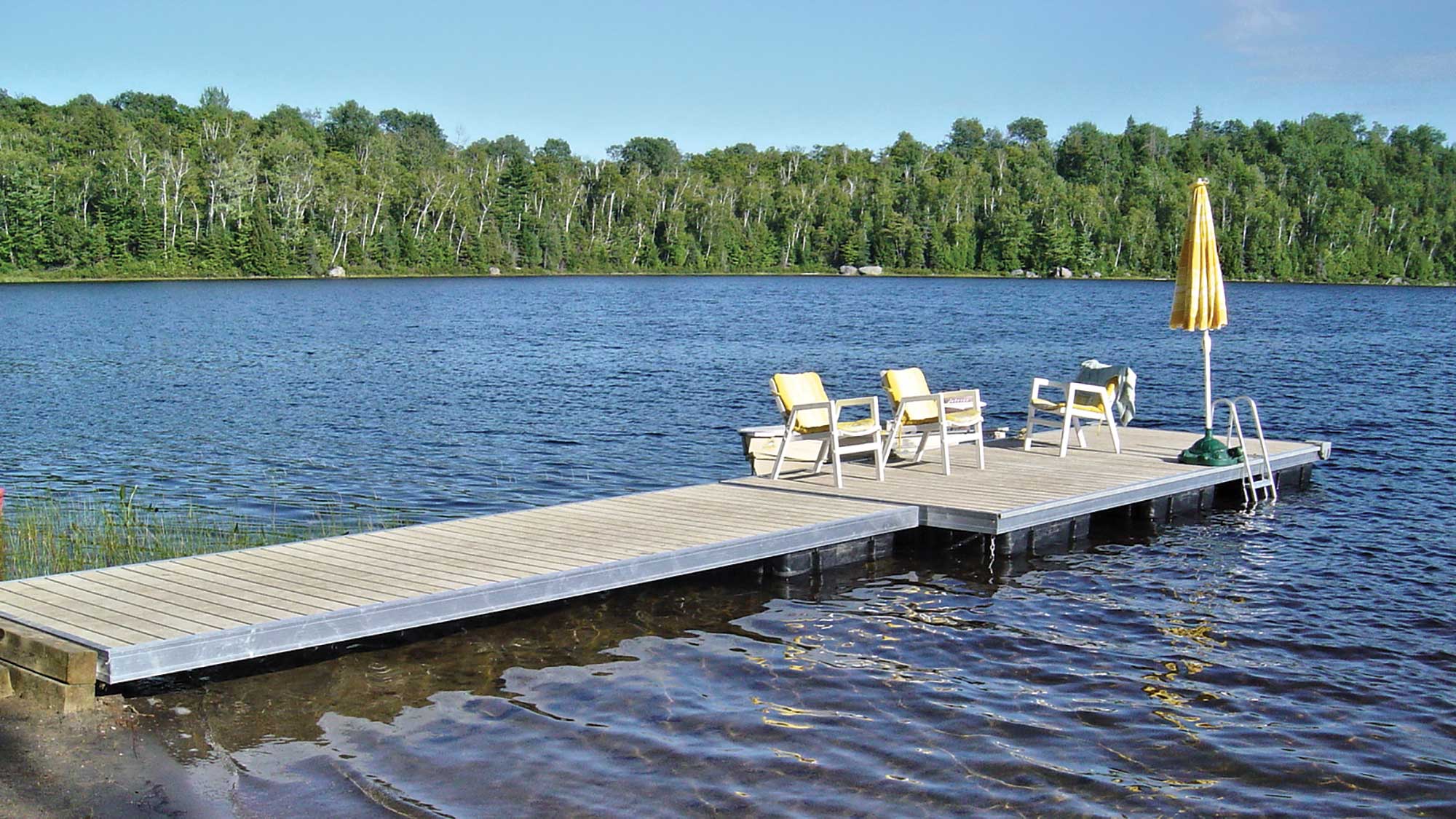Upgrade Your Waterfront With Resilient Floating Docks
Updating your waterfront with sturdy floating docks can considerably improve both performance and looks, supplying a versatile solution for various water activities. With an array of products readily available, including low-maintenance alternatives and typical timber, selecting the best dock can enhance your individual design and fulfill sensible needs.
Advantages of Floating Docks
Floating docks deal a plethora of advantages that enhance their charm for numerous maritime applications. Unlike conventional fixed docks, floating docks increase and fall with the tide, ensuring consistent access for watercrafts and boat no matter of environmental conditions.
Additionally, floating docks are simpler to transfer and set up, giving versatility for momentary or seasonal use. Their modular design enables personalization to fit specific needs, whether for personal marinas, household watersides, or business applications.
Furthermore, floating docks produce minimal disruption to the marine environment, maintaining local environments and reducing the possibility of erosion. They also offer enhanced security and security for individuals, as their resilient nature supplies a much more forgiving surface than inflexible structures.
Furthermore, floating docks can help with a diverse variety of activities, such as fishing, swimming, and recreational boating, making them a useful possession for beachfront development. Their versatility and usefulness make floating docks a favored selection for a range of marine tasks.
Selecting the Right Products
Picking suitable materials for floating docks is essential to their long life, efficiency, and general efficiency. When picking materials, consider elements such as ecological exposure, maintenance requirements, and architectural honesty. Usual products consist of timber, plastic, light weight aluminum, and composite choices, each offering unique advantages and downsides.
Wood, while aesthetically pleasing, requires regular maintenance to stop rot and decay. Pressure-treated wood can improve sturdiness, but it may still catch water damages over time. Plastic floats, typically made from high-density polyethylene, are resistant to deterioration and require marginal upkeep, making them an eye-catching choice for low-maintenance applications.
Light weight aluminum is an additional viable alternative, known for its toughness and lightweight buildings. It is immune to corrosion and can hold up against extreme climate problems, although it might be a lot more costly than other products. Compound materials combine the most effective features of wood and plastic, providing a resilient and low-maintenance choice that imitates the appearance of timber without the associated downsides.
Ultimately, the selection of material should straighten with the planned use, ecological factors to consider, and spending plan constraints, guaranteeing a sturdy and useful floating dock that fulfills your certain requirements.
Setup Process Overview
The effective setup of a floating dock counts on careful preparation and implementation, guaranteeing that it operates effectively in its desired setting. The initial step involves evaluating site problems, including water deepness, shoreline functions, and prevailing weather patterns, which will certainly educate the dock layout and anchoring system.
Complying with the site assessment, the next phase is to prepare the floating dock elements. This consists check my reference of assembling the framework, protecting floats, and connecting any kind of required hardware. It is crucial to make certain that all links are durable and water-resistant to endure marine problems.
As soon as the dock is assembled, the installment process commences with placing the dock in the water. This can involve a crane or various other lifting equipment, especially for bigger structures. Proper alignment is vital for performance and safety.

Maintenance Tips for Long Life
Normal upkeep is crucial for making certain the longevity and ideal efficiency of a drifting dock. To achieve this, begin with regular evaluations a minimum of two times a year, concentrating on floating dock company the honesty of the dock's framework, including the flotation gadgets and attaching equipment. Try to find indications of damages, rust, or wear, and deal with any kind of concerns immediately to prevent further wear and tear.
Cleansing is one more important aspect of upkeep. Get rid of debris, algae, and barnacles from the dock's surface area to protect against slippery problems and preserve aesthetic appeal. Make use of a soft brush and a light detergent to prevent harming the dock's materials.
Furthermore, make certain that the dock is appropriately anchored and safeguarded to endure seasonal changes in water degrees and climate condition. Examine the anchoring system for security and make changes as necessary.
Enhancing Your Outdoor Visual
To develop a visually appealing outside space, incorporating a drifting dock can considerably enhance the general aesthetic of your waterside home. Floating docks are not only practical yet can also function as a striking prime focus that enhances the all-natural environments - floating dock company. Available in different materials and layouts, these docks can be tailored to match your residential or commercial property's architectural design and landscape
The addition of ornamental elements, such as incorporated lighting or trendy barriers, further raises the dock's aesthetic allure. Consider using all-natural timber finishes, which mix perfectly with the environment, or going with modern materials Find Out More like light weight aluminum or composite decking that supply a streamlined, contemporary look.
Purposefully positioning planters or seating locations on or around the dock can create welcoming rooms that motivate leisure and enjoyment of beachfront sights. Furthermore, integrating shades and appearances that integrate with your landscape will develop a cohesive aesthetic throughout your outdoor location.

Final Thought

Updating your waterfront with durable floating docks can substantially improve both capability and aesthetics, providing a flexible service for various water tasks. Unlike conventional fixed docks, floating docks surge and loss with the trend, making certain regular availability for watercrafts and boat no matter of ecological conditions.Choosing appropriate materials for floating docks is important to their durability, efficiency, and total efficiency.Once the dock is set up, the setup process begins with placing the dock in the water.In recap, floating docks offer various benefits, consisting of flexibility to water level adjustments and a range of material choices.